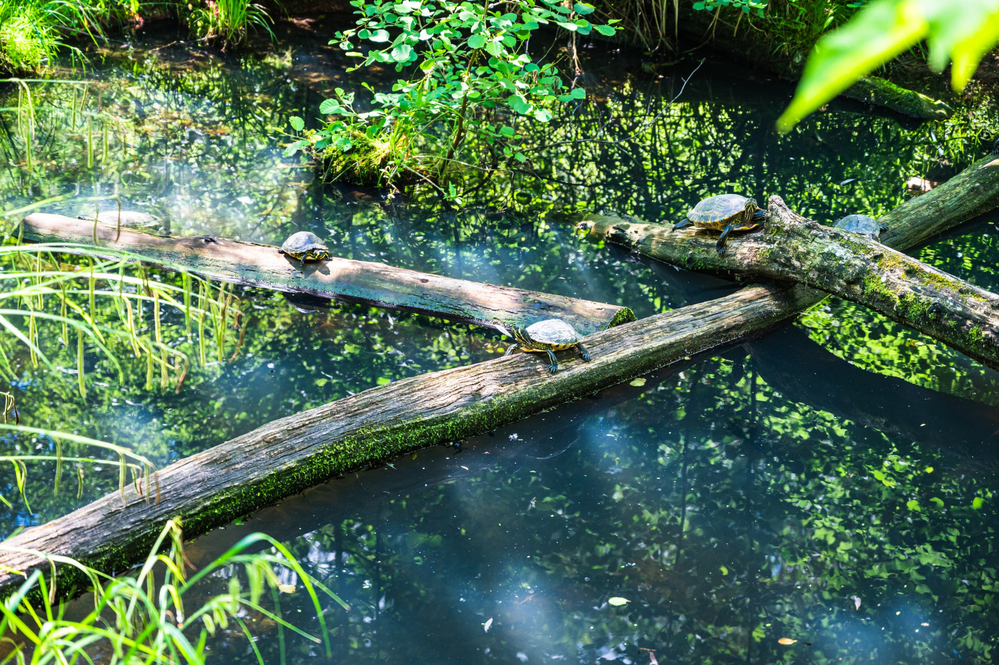
Lakes are some of the most vital ecosystems on the planet. They serve as habitats for a wide array of aquatic life, including fish, amphibians, invertebrates, and plant species. These water bodies not only support biodiversity but also provide drinking water, recreation, and aesthetic value to surrounding communities.
However, lakes and other aquatic ecosystems are increasingly under threat from pollution, invasive species, climate change, and human development. Without proper management, these pressures can disrupt aquatic ecosystems and lead to biodiversity loss. That’s where lake management comes in—a strategic, science-based approach to preserving the health of freshwater systems.
In this article, Aquatic Restoration explains the role lake management plays in supporting biodiversity. Remember, we are the specialists to call when you need reliable lake or pond management services.
Lake management involves monitoring, maintaining, and restoring the ecological balance of lakes through a combination of biological, chemical, and physical interventions. The goal is to ensure the long-term health of the lake and its ability to support a diverse range of species. This process includes water quality testing, controlling nutrient levels, managing aquatic plants, preventing shoreline erosion, and addressing invasive species. These lake management strategies create a more stable environment where native aquatic species can thrive.
One of the key threats to lake biodiversity is the introduction of non-native or invasive species. These organisms can outcompete local species for resources, disrupt food chains, and alter the entire lake ecosystem. Some of the common invaders, like zebra mussels or Eurasian watermilfoil, can quickly multiply and make it difficult for native species to survive. Lake management programs include early detection, mechanical removal, or biological controls to manage or eradicate these species before they cause irreversible damage.

If you own a lake or a pond, it’s important to schedule regular inspections to identify and address any signs of invasive species early. Professional lake management teams can assess your waterbody, monitor for problematic plants or animals, and implement control strategies that are safe for native wildlife.
Aquatic plants help to maintain healthy lake ecosystems. They provide food and shelter for fish and insects, stabilize sediments, and help filter pollutants from the water. However, overgrowth of certain plants, especially when fueled by excess nutrients like nitrogen and phosphorus, can reduce biodiversity by limiting light penetration and oxygen levels. A well-managed lake will maintain a balance of native plant species and support both the food web and water quality. If your aquatic plants are yellowing, wilting, or the leaves are rotting, get in touch with a pond management service for help.
Human activities around lakes, such as agriculture, construction, and urban development, can lead to nutrient-rich runoff entering the water. This can cause eutrophication, where excessive nutrients lead to algal blooms and oxygen depletion. These conditions are detrimental to aquatic life—they can result in fish kills and the loss of sensitive species. Lake management specialists can install buffer zones, control stormwater runoff, and work with landowners to reduce fertilizer and pesticide use near water bodies.
Aquatic Restoration is a trusted company offering reliable lake management services, including shoreline stabilization, water quality testing, aeration, and many more. We’ve been helping our clients keep their lakes and ponds in tiptop condition for over 35 years. Our team of experienced technicians has successfully completed over 1300 projects, and we’ve received countless 5-star reviews. Contact us today to schedule a consultation and learn more about our lake and pond management services in Georgia.
Sediment buildup is one of the biggest threats to lakes and ponds. It not only impacts water quality but also…
If you own a pond or lake, you know that proactive maintenance is an integral part of keeping the…
If you’ve ever walked outside and noticed your lake suddenly turn a murky shade of green, you’re not alone. Many…
Lakes are vital ecosystems that support wildlife, protect water quality, and enhance the quality of life for surrounding communities. Whether…
If you’re reading this, there’s a good chance you’re sick and tired of dealing with aquatic weeds that never…